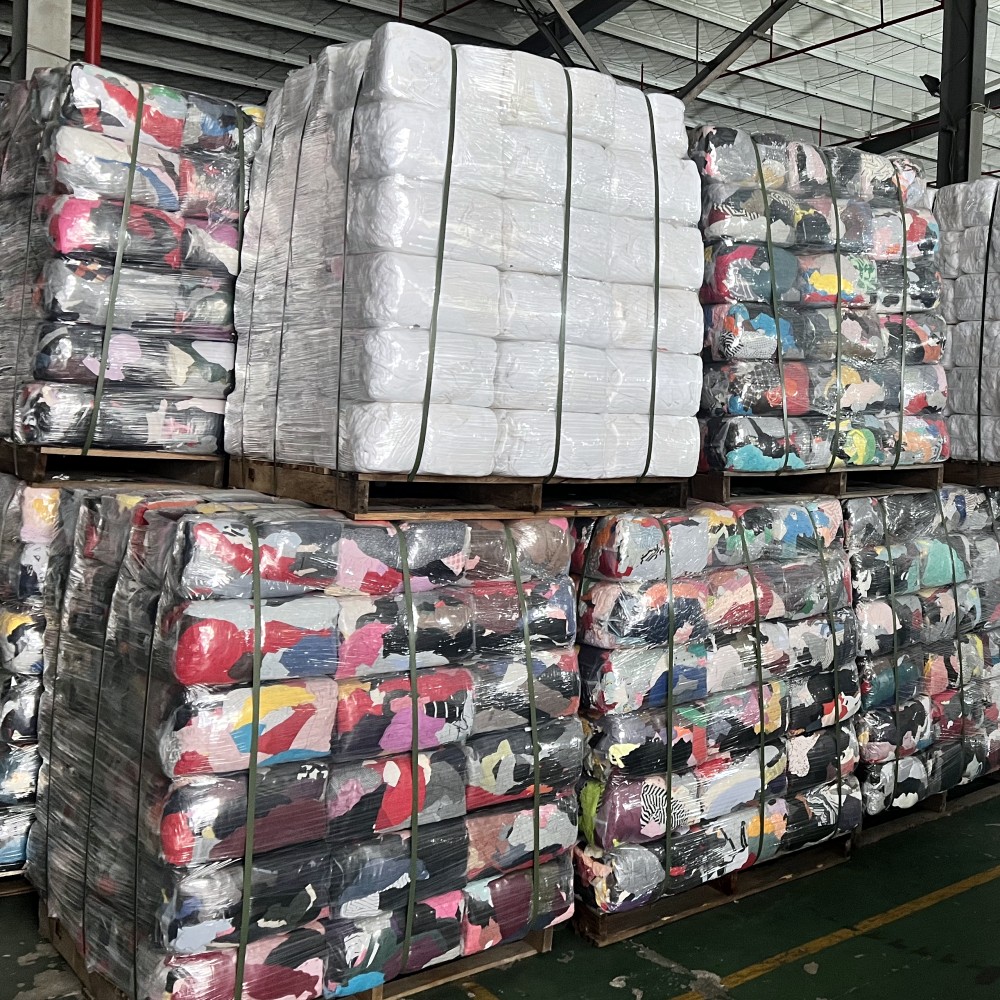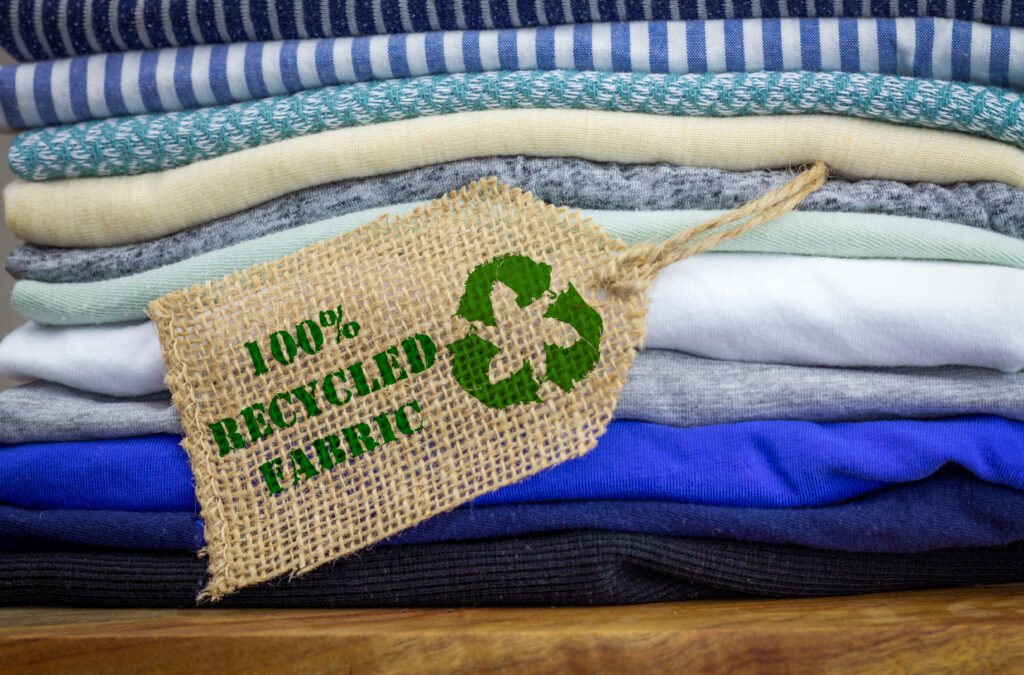Is a Sustainable Textile Supply Chain Possible?
Consumers love the latest fashion trends. Globally, each year, 92 million tons of textile waste are sent to landfills. How do textile manufacturers balance inherent waste while still getting the customer-trending fashion? The first step is understanding the problem.
Why a Sustainable Textile Supply Chain Is Vital
The apparel industry accounts for 10% of global carbon emissions and 20% of global water waste, according to a report by the United Nations Economic Commission for Europe. Not only does the industry waste resources, but it also contributes a significant amount of pollution. Textile manufacturing can emit microplastics into water systems, contaminating water supplies for humans, animals, and plant life.
“Fast fashion” might meet consumers’ need for newness, but more than 85% of post-consumer textiles end up in landfills. Consumers are purchasing clothing faster, but only keeping them for half as long to keep up with the latest fashion trends. So, what’s the solution?
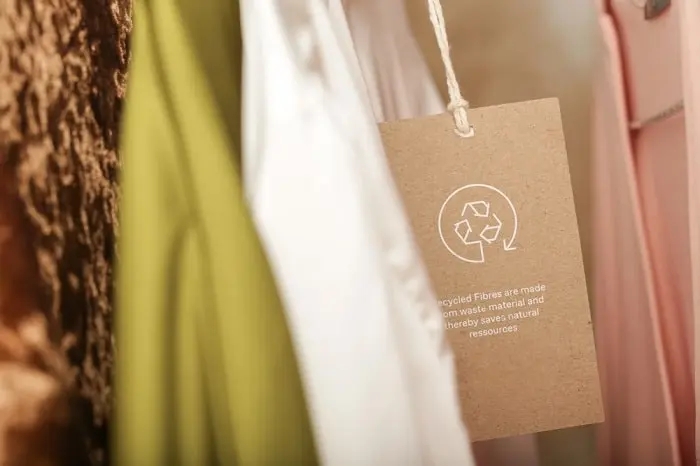
Demand for Sustainability
People want proof that manufacturers are sourcing and providing products in a socially responsible manner. According to McKinsey’s State of Fashion Report 2022, brands are boosting transparency and sustainability by using digital “product passports” to share product information with consumers.
A recent study shows that both Millennials and Gen Z are claiming to be socially responsible shoppers, at 42% and 37%, respectively. They are demanding products that can be proven to be manufactured and distributed in an ethical manner. Companies like Patagonia, H&M, IKEA, and Adidas are now meeting their demand by reviewing their supply chains for ethical processes that they can prove to the market.
Rent and Reuse Fashion
To meet consumers’ desire for the latest fashion, companies are rethinking how to bring not only new but recycled fashion to the market. Rental platforms like Rent the Runway, Armoire, and Le Tote allow customers to customize and frequently update their closets. Creating a “circular economy” that allows customers to return items isn’t easy and requires an efficient yet reverse logistics model.
While there are new players in the market, it takes a significant investment to allow consumers to rent and return fashion at a reasonable price—some are around $200 per month—but these platforms are growing in acceptance. Reusing fashion isn’t just limited to your local thrift store.
The RealReal allows customers to consign luxury items, creating an economy for those who like to rent and reuse top-quality items. For example, customers can consign Stella McCartney fashions and receive a $100 gift card to the brand’s store.
New Manufacturing Processes and Sustainable Fabrics
Textile designers and innovators, such as Stella McCartney, Eileen Fisher, and Mara Hoffman, are creating fabrics that are environmentally friendly yet fashion-forward. In addition, companies like Evrnu, ColorZen, Archroma, and DyeCoo are inventing ways to reduce or eliminate the amount of chemicals that go into the textile manufacturing process.
In 2018, Levi Strauss announced they would start using lasers in their denim finishing process, reducing the amount of chemicals and labor that goes into their clothing. Companies are experimenting with bioengineered fabrics that are lighter and longer lasting, including lab-grown leather and synthetic materials.
The problem for these companies is scalability as they continue to raise millions of dollars to meet industry demand, which will take time. The fashion industry still survives on products that have been in existence for hundreds of years, including cotton, wool, silk, and other common materials, and it may have to wait until engineered fabrics gain greater acceptance and are more widely available.
Organic Cotton
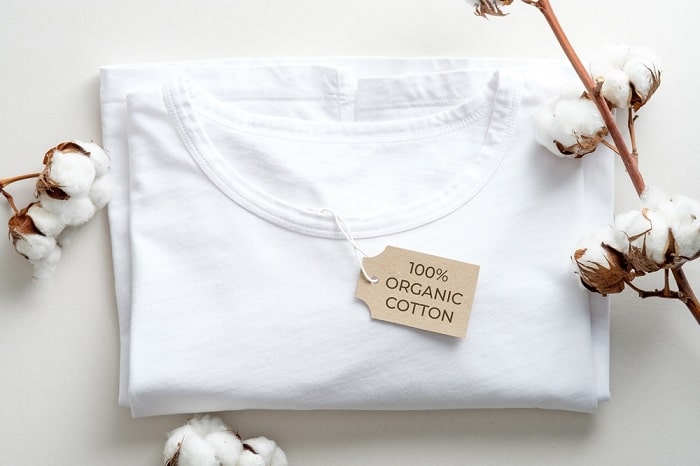
Organic cotton is a sustainable alternative to conventional cotton, cultivated without the use of synthetic pesticides, fertilizers, or genetically modified organisms (GMOs). Its production relies on natural methods such as crop rotation, composting, and biological pest control to maintain soil fertility and reduce environmental impact.
Organic cotton farming promotes biodiversity, conserves water, and minimizes soil erosion, making it an eco-friendly choice. Additionally, organic cotton farmers often receive fair wages and work under better conditions, contributing to social sustainability. The resulting fabric is soft, breathable, and free from harmful chemicals, appealing to consumers seeking environmentally conscious and health-conscious clothing options.
Organic Wool
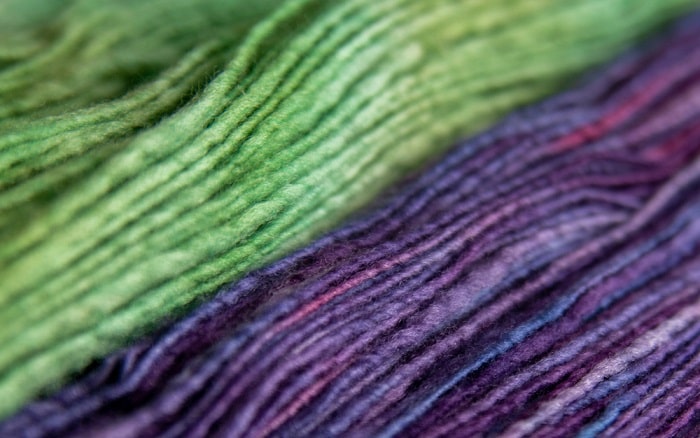
Organic wool is derived from sheep that are raised according to strict organic standards, emphasizing animal welfare and environmental sustainability. These sheep are kept in pasture-based systems where they graze on organic feed, free from synthetic pesticides and GMOs.
Organic wool farming practices prioritize humane treatment, prohibiting mulesing and ensuring that sheep are not subjected to harmful chemicals or unnecessary stress. Farmers also implement natural methods to manage pests and maintain soil health, promoting biodiversity and reducing ecological impact. Organic wool is prized for its natural warmth, softness, and breathability, making it a preferred choice for eco-conscious consumers seeking sustainable and ethically produced clothing and textiles.
Organic Silk
Organic silk is sourced from silkworms reared in accordance with organic standards, focusing on ethical treatment and environmentally friendly practices. The process begins with organic mulberry cultivation, ensuring that silkworms feed on pesticide-free leaves. These silkworms are raised in natural environments, avoiding synthetic pesticides or chemicals in their care.
Organic silk production promotes biodiversity and supports sustainable agriculture by utilizing eco-friendly farming methods such as crop rotation and composting. Additionally, organic silk farming prioritizes fair labor practices, providing better working conditions for farmers and workers. The resulting silk fabric is renowned for its luxurious texture, natural sheen, and hypoallergenic properties, appealing to those seeking sustainable and responsibly sourced textiles.
Hemp
Organic hemp is becoming increasingly popular in the sustainable textile industry due to its eco-friendly cultivation practices, durable fibers, and versatile applications. As a crop, hemp requires minimal water and no synthetic pesticides or fertilizers, making it a more environmentally friendly option compared to conventional cotton or synthetic fibers. Organic hemp cultivation practices focus on promoting soil health and biodiversity, contributing to overall sustainability.
In terms of textile production, organic hemp fibers are prized for their strength, durability, and breathability. They can be spun into yarns and woven or knitted into fabrics suitable for a wide range of applications, including clothing, accessories, and home textiles. Hemp fabrics are known for their natural texture and drape, offering a unique aesthetic that appeals to eco-conscious consumers.
Organic hemp is also versatile and can be blended with other fibers such as organic cotton or recycled polyester to enhance performance or achieve specific characteristics in the final textile product. Blending hemp with other fibers can help improve softness, elasticity, or moisture-wicking properties while still retaining the environmental benefits of hemp cultivation. As consumer demand for sustainable and ethically produced textiles continues to grow, organic hemp is poised to play a significant role in the transition towards more environmentally friendly fashion and textiles.

Regulations
The fashion industry is not without regulation. The U.S., China, and Europe all regulate chemical industries, which provide dyes and treatments for fabrics. Companies, including textile manufacturers, must prove they are in compliance with these laws. Here are the main regulations in place for the sustainable textile industry.
Global Organic Textile Standard (GOTS)
GOTS is a worldwide standard for organic fibers, including ecological and social criteria. It covers the entire textile supply chain, from harvesting raw materials to environmentally and socially responsible manufacturing processes.
OEKO-TEX Standard 100
This certification ensures that textile products are tested for harmful substances and comply with strict limits for chemicals. It focuses on consumer safety and aims to reduce the environmental impact of textile production.
EU Ecolabel
The EU Ecolabel certifies products with a reduced environmental impact throughout their lifecycle, including textiles. It sets criteria for factors such as chemical usage, energy consumption, and waste generation.
REACH
The REACH (Registration, Evaluation, Authorization, and Restriction of Chemicals) regulation is a European Union regulation that addresses the production and use of chemical substances. It aims to protect human health and the environment by promoting the safe use of chemicals in various industries, including textiles.
Textile Exchange Standards
Textile Exchange, formerly known as the Organic Cotton Exchange, develops standards and certifications for sustainable fibers and materials, such as the Responsible Wool Standard (RWS) and the Recycled Claim Standard (RCS).
Fair Trade Certification
Fair Trade certification ensures that producers in developing countries receive fair wages and work under safe conditions. While not specific to textiles, Fair Trade principles are often applied to cotton and other fibers used in textile production.
ISO 14001
ISO 14001 is an international standard for environmental management systems. It provides guidelines for organizations to develop and implement policies and procedures to minimize their environmental impact, including those in the textile industry.
Other National Regulations
Many countries have their own regulations and initiatives aimed at promoting sustainability in the textile industry, addressing issues such as water pollution, waste management, and worker safety.
Value Supply Chain
Companies are responding to the increasing consumer demand for clothing that is ethical yet doesn’t destroy the environment. While regulation is helpful, it cannot keep up with the fast-paced change demanded by customers. Coalitions like the CDP are bringing together suppliers and retailers with significant procurement power to review their entire supply chain and use their influence to incentivize their suppliers to comply with environmentally and socially responsible policies.
One CDP participant, WalMart, in partnership with the Sustainability Consortium’s help, previously identified “hot spots” to address within their textile value chain. This allowed them to examine important issues to improve transparency throughout their supply chain. “Our vision is for all textile products to be sustainably designed, sustainably produced, and made with quality that lasts,” reports the WalMart website. “We are challenging suppliers to deliver Every Day Low True Cost (EDLTC) products that are not only affordable but are also produced in a way that is more sustainable for people and the environment.”
Software exists for companies to develop their own value supply chains. Sourcemap is a tool that allows companies to map their entire supply chains, allowing companies to collect data, visualize, and report their findings. Once mapped, companies can review the products, inventory, and the impact they have on the environment. Sourcemap’s founder and CEO, Leonardo Bonanni, says: “Fashion supply chains are among the most complex in the world because they can change with every season, every style.”
Companies Leading the Way in Sustainability
Many brands and companies have already started their sustainable supply chain journey, offering ethical practices and transparency. For example, top outdoor apparel company Patagonia has been a leader in sustainability efforts, implementing various initiatives to reduce its environmental footprint, including using recycled materials, investing in renewable energy, and advocating for environmental protection.
Footwear company Allbirds prioritizes sustainable materials and ethical manufacturing processes, with transparency about its supply chain offered to customers. Allbirds uses natural and renewable materials like merino wool and eucalyptus fiber, and it works with suppliers who adhere to strict environmental and ethical standards.
Beyond its famous “One for One” model, shoe brand TOMS has been increasingly emphasizing sustainability and ethical sourcing in its supply chain, committing to using eco-friendly materials, reducing waste, and improving labor conditions in its factories. Retailer of outdoor gear and clothing, REI, in partnerships with responsible suppliers, has developed rigorous standards for its products, focusing on sustainability, durability, social responsibility, and environmental conservation efforts.
Clothing brand Everlane, in addition to being one of the most sustainability-driven companies with ethical labor practices and sustainable materials, also invests in initiatives to reduce waste and environmental impact throughout its operations. Mega furniture store IKEA has set ambitious sustainability goals, including using renewable and recycled materials, reducing waste, and promoting fair labor practices. The company also invests in renewable energy and initiatives to address climate change.
While facing criticism in the past, H&M has been working to improve its sustainability efforts, including transparency initiatives and commitments to ethical sourcing. H&M has implemented various sustainability programs, such as using organic and recycled materials, reducing water and energy consumption, and promoting fair wages and working conditions for garment workers.
Adidas, too, has been increasing its focus on sustainability, including initiatives to improve transparency in its supply chain and use more eco-friendly materials. Adidas has committed to reducing its environmental footprint by sourcing sustainable materials, reducing waste, and minimizing carbon emissions. The company also supports social initiatives, such as fair labor practices and community engagement programs.
More Work to Do
As long as the demand for fast fashion exists, customers will continue to crave a stream of new textiles. The industry, including their vendor partners, are taking the lead to improve fabrics and create a more environmentally sound approach to fashion and overcome the hurdles of complex global supply chains.
Sustainable Supply Chain
A sustainable supply chain is important for numerous reasons. Firstly, it guarantees the utilization of eco-friendly materials, such as recycled polyester and wood pulp, and raw material options like organic cotton, linen, wool, and hemp. This minimizes the environmental impact associated with textile production. By integrating sustainable practices into the production process, harmful chemicals are reduced, ensuring a safer working environment for laborers and lowering the risk of adverse health effects.
Ensuring fair labor practices should be a priority for a sustainable supply chain, so that workers are treated ethically and compensated fairly. Innovative materials and processes are also employed, leading to the development of sustainable textiles that require less energy and resources to manufacture. Ultimately, by prioritizing sustainable practices throughout the supply chain, companies can mitigate environmental harm, support ethical labor standards, and drive innovation toward a more sustainable future.



